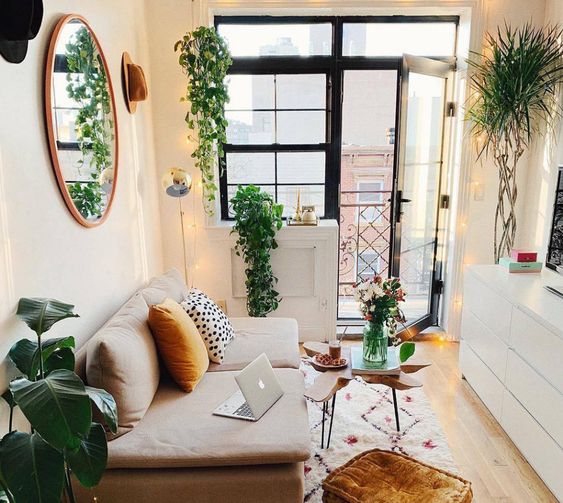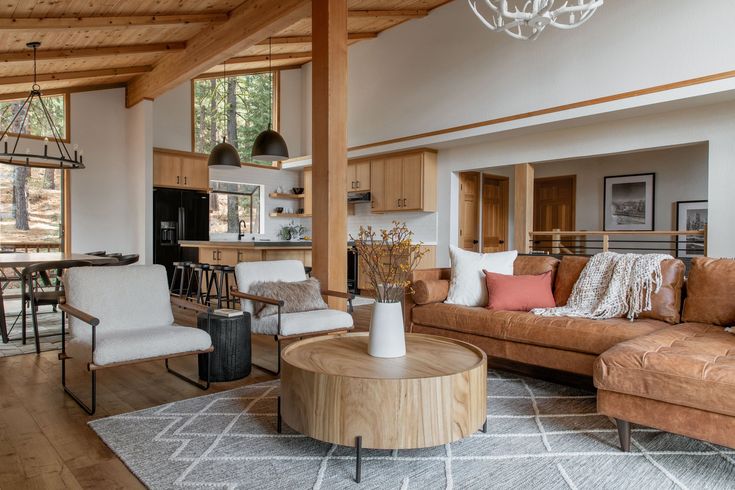Andraursuta.com – Scandinavian interior design takes its cues from historic buildings that are several centuries old. They feature massive windows, high ceilings, and old-fashioned radiators. In addition, they may include intricate moldings, paneling, and traditional Scandinavian stoves. The combination of these architectural details with all-white backdrops creates a dramatic contrast. While the walls and ceiling are usually painted white, ornate moldings are often framed in a slightly darker shade.
Scandinavian Home Design Style Sign
The modern Scandinavian home design style is characterized by its use of natural elements. In addition to using light woods and environmentally friendly materials, the Scandinavian decor includes sculptural pieces and house plants. In addition to these elements, Scandinavian designs also feature a neutral color palette and focus on open spaces and bright spaces.
Another benefit of Scandinavian design is that it is extremely accessible. It does not require large amounts of money for furnishings and decor. Those on a budget can use a combination of fine pieces and inexpensive Ikea re-creations. It also allows for a more harmonious relationship with nature. And with so many people adopting this design style, it is becoming more popular. This trend has become a popular choice for eco-conscious homeowners who want to incorporate a sustainable home design into their homes.

Another characteristic of Scandinavian home design is its use of thoughtful storage space. This helps to hide clutter and create a peaceful atmosphere in the home. Many Scandinavian homes include beautiful antiques and beautiful storage pieces to create a warm atmosphere. If you want to create a modern Scandinavian home design, it is important to remember the Scandinavian philosophy of embracing nature.
Scandinavian Home Design Using Wooden Furniture and Fixtures
The Scandinavian home style is also known for its use of wooden elements. Most Scandinavian homes use wooden furniture and fixtures. However, the Scandinavian style can also incorporate metallic elements. Often, copper and brass pendants are installed in wooden ceilings. The color palette used in Scandinavian home design is predominantly white, but you can incorporate darker colors to create a more dramatic contrast.
Another characteristic of Scandinavian home design is the use of blue accents. This style is often referred to as hygge, a Danish word that means cozy and connected. It is easy to integrate Scandinavian accents in almost any room of the house. You should focus on two or three Scandinavian decor elements in each room to achieve a modern Scandinavian look. It is also important to include several accents in blue.

The Scandinavian style also includes a lot of soft textures and natural materials. Light woods are preferred for this style, such as beech and ash. Other woods such as pine can also be used to create a Scandinavian look. Using soft textures to accent these materials will also add visual interest and soften the overall look. This is especially important in the winter. You want to avoid having a home that is too dark and too cold.
The World’s Most Popular Interior Design Style
While it may seem that Scandinavian design is outdated, it has evolved since the time of Napoleon. During this period, wooden campaign furniture was made of darker woods and became popular. This period also saw the birth of the Arts and Crafts movement, which merged function and romance in Scandinavian design. These influences continue to influence Scandinavian design to this day. This style of interior design has become one of the most popular and coveted in the world.
In addition to incorporating timeless classics into your home, Scandinavian decor emphasizes simplicity. By using functional, space-saving storage solutions, Scandinavian interior design is a smart way to keep a room organized and uncluttered. With minimal details and smart storage space, a Scandinavian interior is a relaxing and soothing place to be.

The Scandinavian style emphasizes natural materials and the Scandinavian style of decorating. Natural wooden surfaces are paired with soft textiles and geometric forms. The Scandinavian style is also minimalist, focusing on balance between a minimal amount of furniture and accessories and an expanse of exposed floor. The use of neutral colors and patterns is essential in this style.
